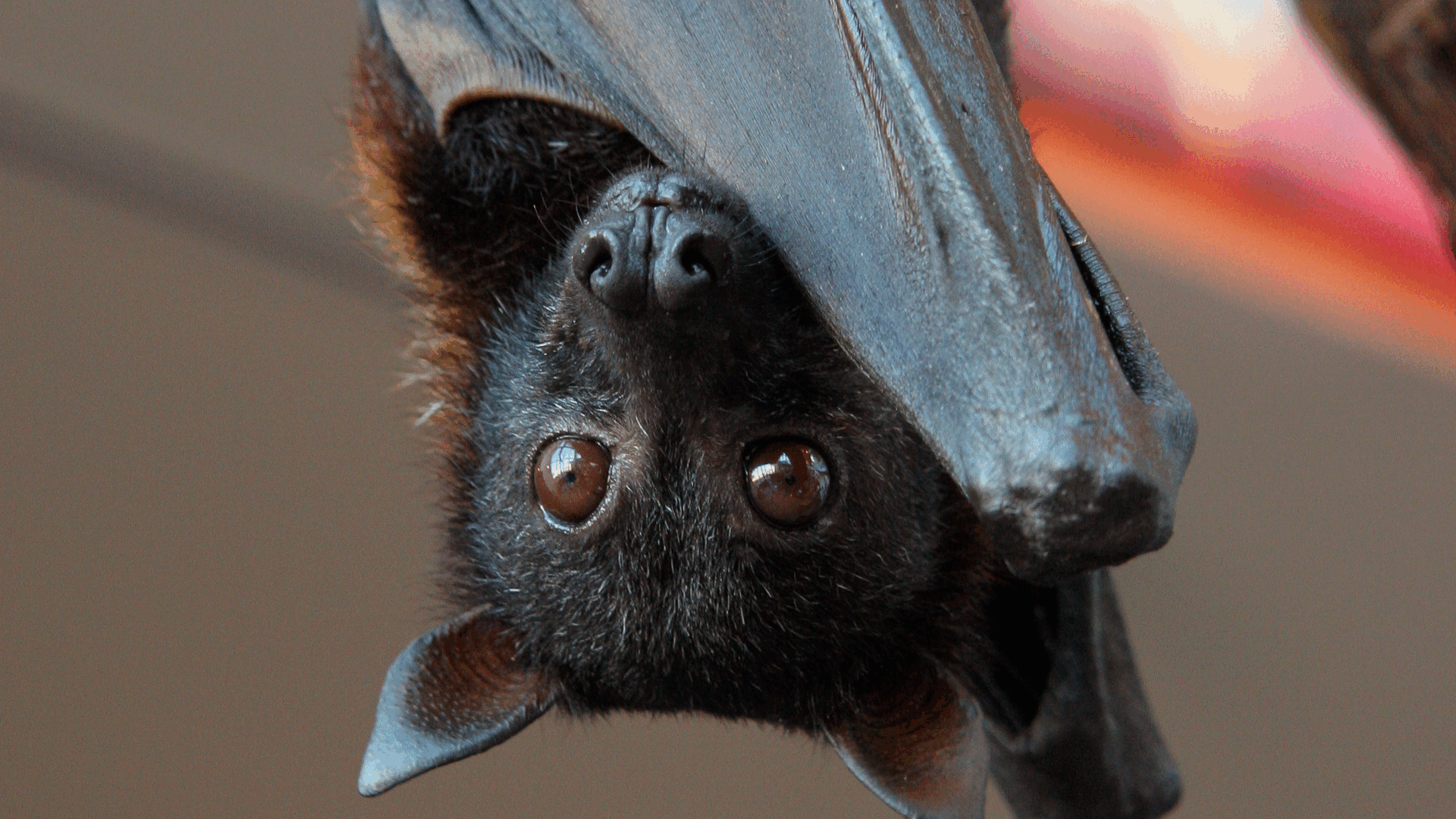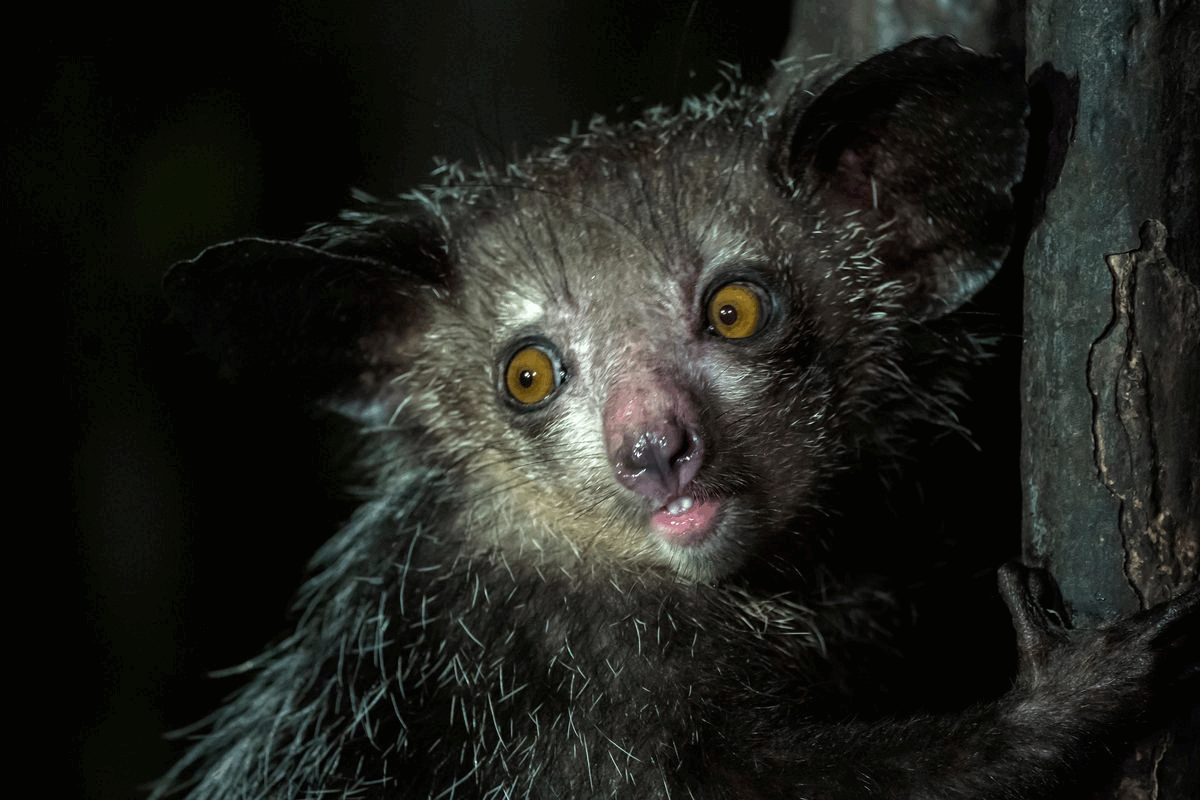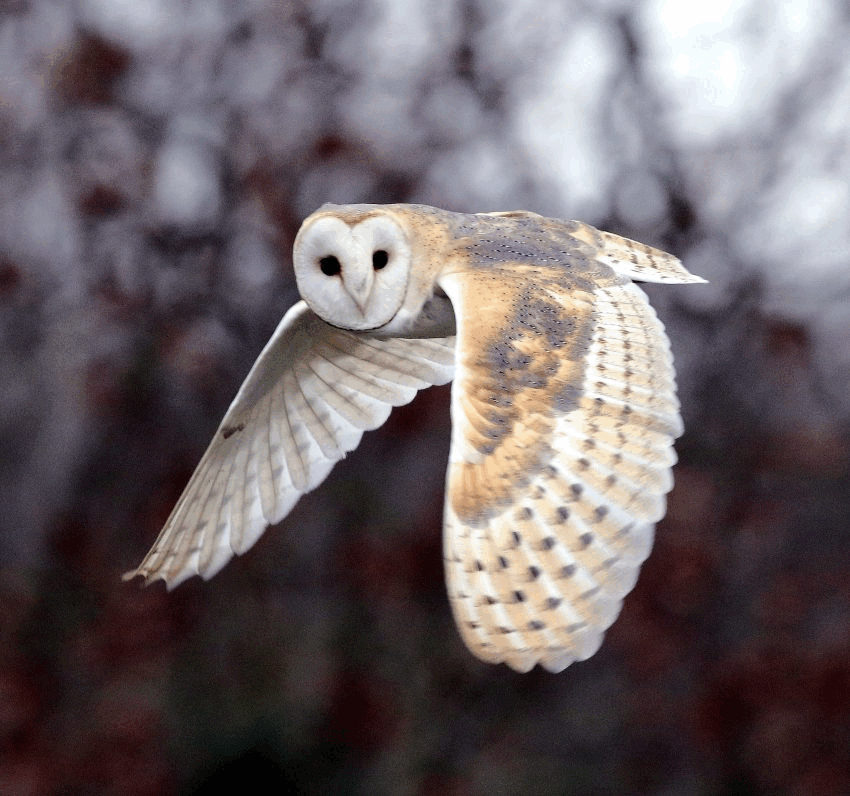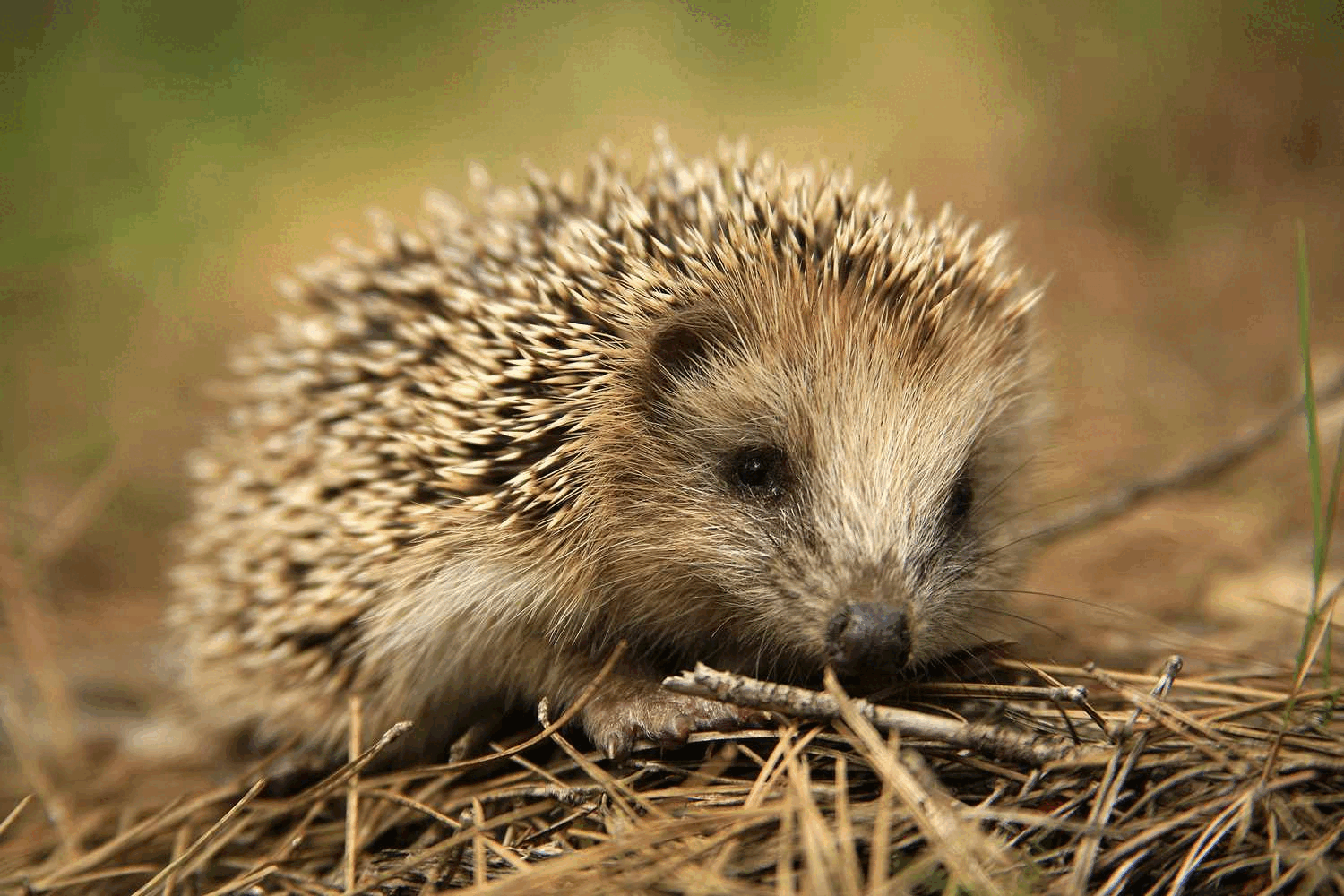
Bats
Bats are the only mammals capable of sustained flight. They help control insect populations through their diet of insects, and some species also pollinate plants and disperse seeds. Bats use echolocation to navigate and hunt in the dark, making them highly adapted for nocturnal life.
Scientific Name: Chiroptera
Habitat: Caves, forests, urban areas
Diet: Insects, fruit, nectar, and small animals
Conservation Status: The Little Brown Bat is near threatened.

Aye-Aye
The Aye-Aye is a lemur native to Madagascar, known for its unique method of finding food called percussive foraging. It taps on trees with its elongated middle finger to locate insects and larvae. This nocturnal animal has a distinctive appearance with large eyes and a bushy tail.
Scientific Name: Daubentonia madagascariensis
Habitat: Caves, forests, urban areas
Diet: Insects, fruit, and nectar
Conservation Status: Endangered

Barn Owl
Owls are renowned for their silent flight and exceptional night vision. They have specialized feathers that reduce noise and great hearing that allows them to locate prey in the dark. Owls, like bats, play a vital role in controlling rodent populations and maintaining the balance of their ecosystems.
Scientific Name: Strigiformes
Habitat: Forests, grasslands, forests
Diet: Small mammals, birds, and insects
Conservation Status: Least concern

Hedgehog
Hedgehogs are small, spiny mammals known for their nocturnal foraging habits. They use their spines for protection against predators and have a great sense of smell to locate insects and small invertebrates. Hedgehogs play a role in controlling insect populations and are a common sight in suburban gardens.
Scientific Name: Erinaceinae
Habitat: Woodlands, grasslands, suburban areas
Diet: Insects, worms, and small fruit
Conservation Status: European hedgehod is vulnerable.